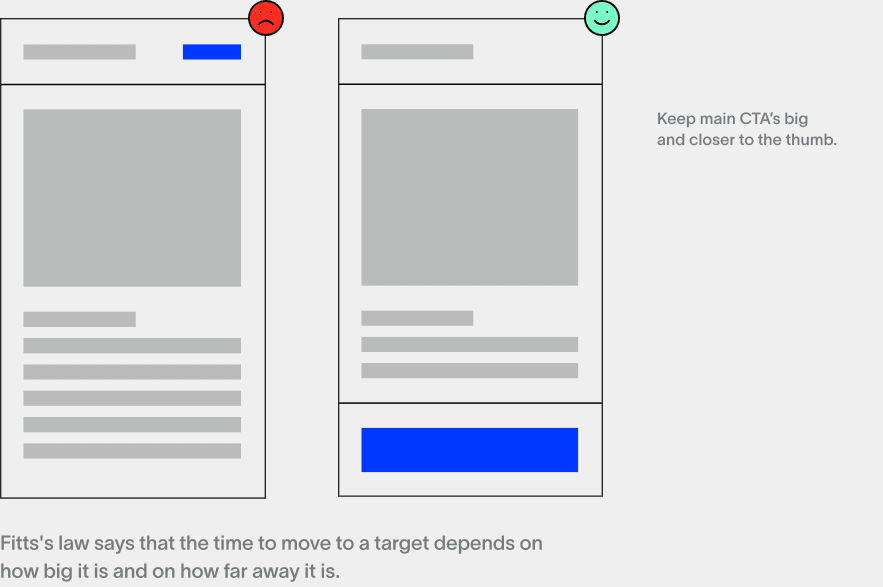In our digital world, where websites are our virtual doorways, the concept of user experience (UX) has taken the center stage. UX design not only impacts how users interact with a website but also influences its performance, branding, and overall success. In this article, we'll delve into the fundamentals of UX - explore its distinctions from UI (User Interface), and discuss the best and worst practices in web design.We’ll also emphasize the significance of defining user personas, and examine its far-reaching effects on SEO, website performance, marketing strategies, and conversions.
However, before we get started, let’s clarify what UX exactly is?
Imagine stepping into a cozy café where every detail is thoughtfully arranged to make your visit delightful. That's the essence of User Experience (UX). It's not just about clicks and scrolls; it's about creating a digital (but not only!) area where users feel understood and valued. It's about making the journey smooth, the interface intuitive, and the experience unforgettable.
Users often won't know why they don't like a website or will find it unintuitive. They will simply feel that something doesn't suit them. The goal of UX is to guide the user of a website or product so that they navigate intuitively and their presence on the website is converted into sending an e-mail, buying a product or signing up for an event.
While UX and UI are often used interchangeably, they represent distinct elements of design.
What is the difference between UX and UI?
UX focuses on the holistic experience and user journey, encompassing research, usability testing, information architecture, and more. UI, on the other hand, deals with the visual elements of a website – buttons, layouts, colors – which contribute to its aesthetics and interactivity. In essence, UX is about the overall feel, while UI is about the look and presentation.
The data collected by Chao Liu and colleagues at Microsoft Research analysed the duration of visits to 205,873 different websites, for which they recorded more than 10,000 visits. In their research, they show that the highest rejection rate is within the first few seconds. Additionally, the average session duration is 42 seconds, according to the analysts. Therefore, it is important to make sure that in such a short time the user sees and experiences exactly what we want.

What are the best and worst practices regarding UX?
Below are the best and worst UX practices. Feel free to check your site for these common mistakes.
Best practises:
- Clear Navigation. A well-organized and intuitive navigation system helps users find information effortlessly.
- Responsive Design. Ensuring your website adapts seamlessly to various devices enhances accessibility and user satisfaction.
- Minimalism. Employing a clean and clutter-free design improves readability and user focus.
- Fast Loading Times. Optimize images and code to maintain swift loading times, preventing user frustration.
- Accessibility. Design with inclusivity in mind, making your website usable by individuals with disabilities. If you want to know more about this aspect, check our article here.
Bad Practices:
- Cluttered Layout. Overwhelming users with too much information or elements can lead to confusion.
- Ignoring Mobile Users. Neglecting mobile optimization can alienate a significant portion of your users..
- Autoplay Media. Forcing videos or audio to play automatically can be disruptive and frustrating.
- Poor Typography. Difficult-to-read fonts or insufficient contrast can hinder user engagement.
- Invasive Pop-ups. Excessive pop-ups can diminish user experience and lead to higher bounce rates.

How should I start my UX adventure?
At the very beginning you should describe your feature users and clients. Who is your website for? Who would you like to open it?
Defining user personas– detailed profiles representing different segments of your target audience – is crucial before embarking on UX design. It helps designers understand user needs, motivations, behaviors, and pain points. By designing with specific personas in mind, you ensure your website caters to real users, enhancing engagement and satisfaction.
If you have already defined your potential client and prepared a preliminary UX journey, but are unable to imagine how it might work in practice - it is a good idea to prepare a prototype.
An effective UX prototype captures the user journey, showcasing intuitive navigation, logical information architecture, and a pleasing visual hierarchy. Interactive elements allow users to envision how they would interact with the final product.
It is also important to take other aspects into account when designing UX mock-ups:
SEO Supercharge. User experience wields SEO power. Google's algorithm factors in bounce rates, time spent, and mobile-friendliness – all complexity tied to UX. A seamless, engaging experience can lower bounce rates and increase time spent, signaling to search engines that your site offers value. Mobile-friendly design, a cornerstone of UX, aligns perfectly with Google's mobile-first indexing, boosting your site's visibility on various devices. In essence, a well-crafted UX not only pleases users but also earns brownie points with search engines, potentially catapulting your site up the search rankings.
Marketing Magic. Think of UX as the bridge between your brand's promises and its delivery. A positive user experience reinforces your brand's credibility and fosters an emotional connection. When users encounter seamless navigation, aesthetically pleasing design, and intuitive interactions, they're more likely to remember and engage with your brand. This harmony between UX and branding aligns seamlessly with marketing strategies, creating a consistent and memorable impression that resonates with your audience.
Conversion Catalyst. The ultimate goal of a website often revolves around conversions – be it signing up for a newsletter, making a purchase, or filling out a contact form. User-centric design, a core principle of UX, can significantly influence conversion rates. When users encounter a website that addresses their needs, provides clear information, and guides them effortlessly, they're more inclined to take the desired actions. A seamless and enjoyable experience minimizes barriers, creating a smoother path from visitor to customer.
In essence, designing for user experience is like hosting a memorable night. The décor, the conversations, and the ambiance – they all contribute to how your guests (users) feel. By embracing the right moves and avoiding the wrong ones, your website can become the talk of the town – a place where users don't just visit, they stay, explore, and return with a smile.
So, let's dance to the rhythm of great UX and make your website a star in the digital ballroom!

